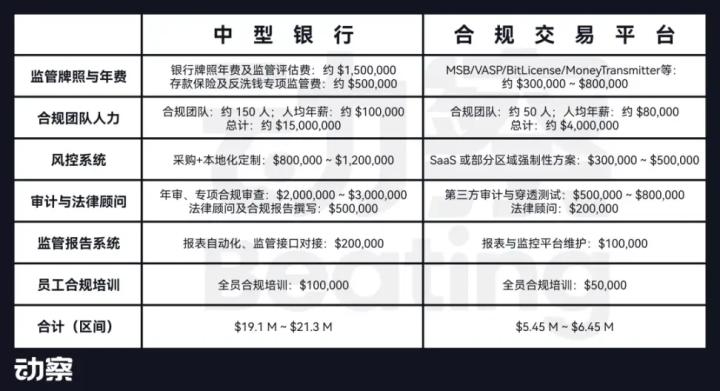Author | Aki Chen, Wu Blockchain
Original Title: Hong Kong Stablecoin Bill Unveiled: Real-Name Requirement Sparks Controversy, Relatively Conservative Towards DeFi
This article was organized with the help of GPT, solely for information sharing, and does not constitute any investment advice. Readers are strictly advised to comply with local laws and regulations and not participate in illegal financial activities.
Introduction
On August 1, 2025, Hong Kong's Stablecoin Regulation will officially take effect. The regulation stipulates that institutions issuing or offering fiat-pegged stablecoins to local retail must apply for a license from the financial authority, strictly adhering to reserve mechanisms, AML/KYC obligations, and transparency requirements. The Hong Kong Monetary Authority simultaneously announced the launch of stablecoin license applications, with the first round of applications closing on September 30, and the first batch of licenses expected to be issued in early 2026. These actions are viewed by the industry as a "significant milestone in global stablecoin compliance" but have also sparked intense debate within Web3 projects and communities due to their strict real-name (KYC) requirements and high-threshold exclusive design, comparable to the world's strictest stablecoin legislation. Meanwhile, the US SEC's Project Crypto plan proposes an "innovation exemption" that starkly contrasts with Hong Kong's approach.
Overview of Stablecoin Core Regulations
According to the new rules, all stablecoin issuance, circulation, or provision to local retail users must obtain a specific license from the financial authority. Core requirements include:
· Capital Requirements: Minimum paid-in capital of 25 million Hong Kong dollars;
· Reserve Mechanism: 100% high-liquidity asset backing (cash, short-term government bonds), mandatory custodial isolation, and repledging prohibited;
· Redemption Mechanism: Users can redeem at face value within 1 day;
· Real-Name System (KYC): All user identities must be retained for over 5 years, with DeFi scenarios and anonymous wallet access explicitly prohibited;
· Marketing Prohibition: Unlicensed stablecoins cannot be marketed to society, with potential fines and criminal liability.
... [rest of the text continues]Industry Impact Analysis: Reactions from Project Parties, Users, and Market Chains
According to Techub News reporters' on-site investigation, on the first day of Hong Kong's "Stablecoin Regulation" taking effect on August 1st, some cryptocurrency OTC offline stores, including One Satoshi, have temporarily suspended operations due to concerns about violating regulatory boundaries. Meanwhile, some OTC stores have chosen to continue normal business, showing industry divergence in understanding the new regulations. After the regulation's introduction, the Hong Kong Web3 industry's reactions varied. Some said "finally there is regulation," while others frankly stated, "this is not the regulation we wanted." Real-name systems, licensing, and high thresholds have blocked many native projects. Especially since stablecoins cannot directly connect to DeFi, anonymous wallets and open contracts are excluded from compliance, which essentially means Hong Kong stablecoins will not support free circulation on-chain.
For teams originally hoping to establish Hong Kong as a Web3 base, this is clearly a setback. If you want to issue a token, you must apply for a license; if you want to create a wallet, you must ensure every address is real-name verified — this deviates from the traditional meaning of "Web3," looking more like "Web2.5" or "Permissioned Chain Finance." A more realistic issue is that the regulation excludes small and medium-sized entrepreneurs. While the Hong Kong Monetary Authority claims to welcome innovation, it seems more welcoming to banks and giants, with only invited institutions or platforms qualifying for license applications. The entire system design appears aimed at letting "orthodox forces" dominate stablecoin development, with individuals and small projects either waiting and watching or leaving. If Hong Kong's previous Web3 ecosystem was wildly growing, now it's a comprehensive "order reconstruction." However, in pursuing compliance and financial stability, Hong Kong might also be losing the free spirit that initially attracted developers.
Comparison with Other Regulatory Frameworks
Compared to the "innovation exemption" proposed by the newly launched Project Crypto across the ocean, Hong Kong's new stablecoin regulations are primarily characterized by clear regulation, strong KYC real-name systems, and robust anti-money laundering measures.
[Image]
It can be seen that Hong Kong's current strategy leans towards building a "quasi-sovereign settlement tool," emphasizing regulatory leadership and financial safety, blocking typical Web3 capabilities like permissionless structures, contract calls, and decentralized wallets from the regulatory system. This somewhat predetermines that stablecoins "can only serve regulated financial institutions" rather than being used as neutral infrastructure in the on-chain ecosystem.
In comparison, the EU's MiCA, while also emphasizing KYC, allows certain flexibility — such as exemption clauses for low-amount transactions or allowing anonymous wallets. Singapore's DTSP is closer to a "layered sandbox" approach, welcoming DeFi projects with risk control capabilities to gradually test waters. In the US, although regulation has long lagged, signals of moving towards on-chain institutional modernization and balancing financial innovation have emerged strongly after the GENIUS Act's signing, PWG Report's release, and Project Crypto's launch. The current SEC chairman even emphasized in a public speech: "We introduce regulation for the sake of regulation, which is a Procrustean approach."
This comparison reveals core differences: Hong Kong bets on stablecoin compliance infrastructure, the US moves towards on-chain institutional modernization, the EU seeks universal standards, and Singapore maintains financial experimental openness. Hong Kong's current route is more suitable for "Permissioned Chain Finance" serving offshore settlement purposes, while its compatibility and attractiveness are relatively limited for Web3 paths emphasizing open ecosystems and anonymous circulation.
Conclusion: Can Compliance and Openness Be Balanced? Hong Kong Still Experimenting with Boundaries
Regulation must advance but also leave room for flexibility. As an Asian financial center, Hong Kong is not just a testing ground for technology and systems but also bears the responsibility of establishing a paradigm for the region and even globally. However, while promoting KYC real-name verification, anti-money laundering, and traceable mechanisms, the real long-term challenge is how to not completely erase on-chain privacy space and how to retain a certain degree of openness and scalability while ensuring financial safety. As Dr. Xiao Feng said, blockchain's development relies on its fundamental characteristic of being permissionless. Anyone can freely join or exit the network, whereas Hong Kong's current stablecoin regulation's emphasis on real-name systems and approval mechanisms somewhat deviates from this open logic.
Stablecoins are essentially an institutional innovative tool linking on-chain and off-chain, bridging traditional and future systems. Overly "paternalistic" regulation not only struggles to integrate into the current DeFi ecosystem but might also lose Hong Kong's key position in reshaping global digital financial order. In the next stage of implementation and interpretation, how Hong Kong finds balance between regulatory rigidity and technological flexibility is worth continued attention from all sectors.
Twitter: https://twitter.com/BitpushNewsCN
Bit Push Telegram Group: https://t.me/BitPushCommunity
Bit Push Telegram Subscription: https://t.me/bitpush







